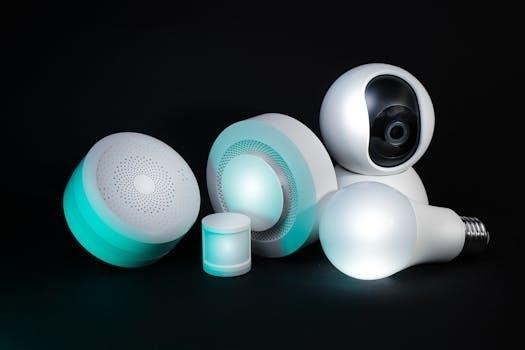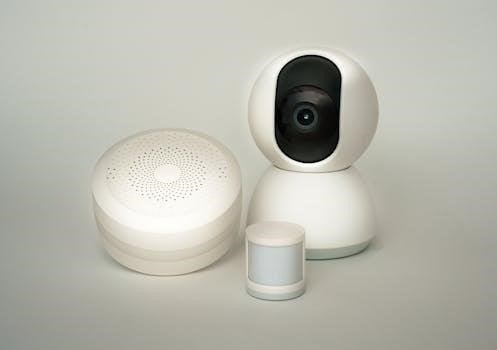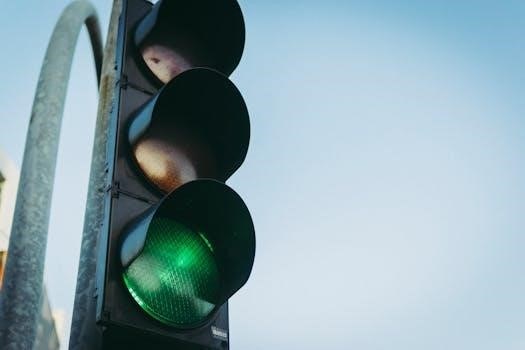
-
By:
- otis
- No comment
patriot lighting motion sensor instructions
Patriot Lighting Motion Sensor Instructions⁚ A Comprehensive Guide
This comprehensive guide offers instructions for Patriot Lighting motion sensors. We will explore the features, installation process, and troubleshooting tips. Suitable for wall or eave mounting with a wide detection area. Expand functionality, safety, and security with Patriot Lighting.
Understanding Patriot Lighting Motion Sensors
Patriot Lighting motion sensors provide energy savings, efficiency, and enhanced security for your home or business. Equipped with flexible motion detection technology, these sensors automatically activate lights when movement is detected within their range. This feature not only deters potential intruders but also provides convenient illumination for pathways, entryways, and other outdoor areas.
These sensors are designed for both wall and eave mounting, offering versatility in installation to suit various architectural styles and landscaping layouts. The adjustable sensing time, ranging from 5 seconds to 12 minutes, allows you to customize how long the light remains on after motion is detected. Additionally, the Lux setting, adjustable from 1 to 1000 lux, enables you to control the sensor’s sensitivity to ambient light, ensuring it operates only when needed.
With a wide detection area, some models boasting up to 240 degrees and 70 feet, Patriot Lighting motion sensors provide comprehensive coverage. Understanding these features is crucial for optimizing performance and maximizing the benefits of your security lighting system.

Key Features of Patriot Lighting Motion Sensors
Patriot Lighting motion sensors boast adjustable sensing time and Lux settings. They have a wide detection area, enhancing functionality and safety. Designed for wall or eave mounting, these sensors provide energy savings and efficient security.
Adjustable Settings⁚ Time, Sensitivity, and Lux
Patriot Lighting motion sensors offer a range of adjustable settings to customize performance. The “Time” setting allows users to determine how long the light remains on after motion is detected, typically ranging from a short burst to several minutes.
Sensitivity settings control the sensor’s responsiveness to movement. Higher sensitivity levels enable the sensor to detect even slight motions at a distance, while lower sensitivity reduces the likelihood of false triggers from small animals or environmental factors like wind.
The “Lux” setting, also known as daylight sensitivity, determines when the motion sensor becomes active. This setting allows the user to specify the ambient light level at which the sensor will begin detecting motion. By adjusting the Lux setting, users can ensure that the light only activates during nighttime hours, conserving energy and preventing unnecessary illumination during daylight.

These adjustable settings provide users with complete control over their security lighting system, optimizing it for their specific needs and environment. Experimenting with different settings will ensure optimal performance and minimize unwanted activations.
Detection Range and Angle
Patriot Lighting motion sensors boast a wide detection range, ensuring comprehensive coverage of the designated area. The typical detection range extends up to 70 feet, providing ample coverage for most residential and commercial applications. This extensive range allows the sensor to detect movement from a considerable distance, enhancing security and peace of mind.
The detection angle, often spanning 180 to 240 degrees, further expands the sensor’s field of view. This wide-angle coverage enables the sensor to detect motion across a broad area, minimizing blind spots and maximizing detection capabilities. This feature is particularly beneficial for corner installations or areas with multiple entry points.
It’s important to note that the actual detection range and angle can be influenced by environmental factors such as obstructions, vegetation, and weather conditions. To optimize performance, ensure that the sensor’s field of view is clear of any obstacles that may impede its ability to detect motion accurately.
Properly positioning the sensor and understanding its detection range and angle are crucial for maximizing its effectiveness in deterring intruders and providing reliable security lighting.

Installation Guide for Patriot Lighting Motion Sensors
Follow this guide for installing Patriot Lighting motion sensors. Gather tools, turn off power first for safety. Choose the optimal location. Mount the light fixture and sensor properly, adjusting the sensor head if eave mounting.
Gathering Necessary Tools and Materials
Before commencing the installation of your Patriot Lighting motion sensor, it is essential to gather all the necessary tools and materials to ensure a smooth and efficient process. This preparation will save time and prevent frustration during the installation. First, ensure you have a suitable screwdriver set, including both Phillips head and flathead screwdrivers, to accommodate various screw types. A pair of wire strippers is crucial for safely and effectively stripping the ends of electrical wires.
A voltage tester is paramount for verifying that the power supply is completely turned off before working with any electrical connections, ensuring your safety. You’ll also need electrical tape to insulate and protect wire connections. For mounting the fixture, a drill with appropriate drill bits may be required, depending on the mounting surface.
Additionally, gather any necessary mounting hardware, such as screws, anchors, or brackets, that are compatible with your specific Patriot Lighting motion sensor model and the chosen mounting location. A level will ensure the fixture is installed straight and plumb. Finally, refer to the manufacturer’s instructions for any specific tools or materials recommended for your particular model.
Power Safety⁚ Turning Off the Power Supply
Prioritizing safety is paramount when installing any electrical fixture, including your Patriot Lighting motion sensor. The first and most crucial step is to completely disconnect the power supply to the circuit where you intend to install the sensor. This prevents electric shock, which can be dangerous or even fatal. Locate the circuit breaker that controls the power to the intended location. Typically, this is found in your home’s electrical panel.
Flip the breaker switch to the “OFF” position. To double-check that the power is indeed off, use a non-contact voltage tester. Hold the tester near the wires you will be working with. If the tester indicates the presence of voltage, double-check that you have turned off the correct breaker. If necessary, consult a qualified electrician to ensure the power is safely disconnected. Never assume the power is off; always verify it with a tester.
Once you’ve confirmed the power is off, proceed with the installation. Remember to exercise caution throughout the process, and if you are ever unsure about any aspect of the electrical work, seek assistance from a professional electrician.
Choosing the Optimal Location for Installation
Selecting the right location for your Patriot Lighting motion sensor is crucial for optimal performance and security. Consider several factors before mounting the fixture. First, think about the area you want to monitor. Common locations include entryways, driveways, backyards, and side yards. The goal is to strategically place the sensor to detect movement in these key areas. The sensitivity of the motion sensor will increase, so avoid areas with excessive movement, such as busy streets or trees that sway in the wind, to minimize false triggers.
Next, consider the detection range and angle of the sensor. Patriot Lighting sensors typically have a wide detection area, often up to 180 or even 240 degrees. Ensure the chosen location allows the sensor to cover the desired area effectively. For best performance, install the fixture at least 8 feet above the ground.
Finally, think about the mounting surface. The surface must be stable and capable of supporting the weight of the light fixture. Also, ensure the location provides easy access for wiring and adjustments. If installing under an eave, make sure to adjust the sensor head accordingly for proper operation.
Mounting the Light Fixture and Sensor
Once you’ve chosen the optimal location, you can begin mounting the Patriot Lighting fixture and sensor. Before starting, ensure the power is switched OFF at the breaker to avoid electrical shock. Begin by attaching the mounting bracket to the junction box. The mounting bracket should be securely fastened to the wall or eave.
Next, carefully connect the wiring according to the instructions provided. Typically, you will connect the black wire (hot) to the black wire, the white wire (neutral) to the white wire, and the green or bare copper wire (ground) to the ground wire in the junction box. Use wire connectors to ensure secure and insulated connections.
After the wiring is complete, carefully attach the light fixture to the mounting bracket. Ensure the fixture is flush against the wall surface and securely tightened. Depending on the type of installation, the light fixture and sensor should be mounted as shown in the instructions.
Finally, adjust the sensor head to the desired position. For eave-mounted fixtures, swing the sensor head towards the mounting bracket and rotate it as needed. This ensures the sensor is properly oriented to detect motion in the intended area. Double-check that all connections are secure and the fixture is stable before restoring power.
Adjusting the Sensor Head for Eave Mounting
When installing a Patriot Lighting motion sensor under an eave, adjusting the sensor head is crucial for optimal performance and preventing false triggers. Before proceeding, ensure the power is switched off at the breaker. The sensor head must be rotated to properly detect motion and avoid the risk of malfunction.
Locate the sensor lens and gently rotate it counterclockwise. This reveals the adjustable knobs and slide switch, allowing access to the sensor’s settings. For eave mounting, swing the sensor head towards the mounting bracket. This ensures the sensor is oriented correctly to detect motion below.
Carefully adjust the sensor head angle to maximize its detection range. The goal is to cover the desired area while minimizing false triggers from nearby objects or sunlight. Secure the sensor head in the adjusted position. Double-check that the lens is clean and unobstructed for optimal performance.
After adjusting the sensor head, fine-tune the sensitivity and lux settings as needed. These settings allow you to customize the sensor’s behavior based on your specific requirements and environmental conditions. Once the sensor head is properly adjusted and the settings are configured, restore power and test the sensor to ensure it functions as expected.

Troubleshooting Common Issues
Encountering issues? This section addresses common problems with Patriot Lighting motion sensors. We’ll cover solutions for sensors not detecting motion, lights staying on, and sensitivity issues. Adjust settings, check placement, and ensure proper wiring for optimal performance.
Sensor Not Detecting Motion
If your Patriot Lighting motion sensor isn’t detecting movement, several factors could be at play. First, ensure the power supply to the fixture is active and the circuit breaker hasn’t tripped. Verify the sensor’s detection range and angle are appropriately adjusted for the intended area. Obstructions like plants or structures might be blocking the sensor’s view, so clear any potential hindrances.
Check the sensitivity setting, as a low sensitivity might prevent detection of smaller movements or movements at a distance. The Lux setting might also be a factor; if set too high, the sensor won’t activate during daylight hours. Ensure the sensor lens is clean and free from debris that could impair its function.
Also, consider the ambient temperature; extreme temperatures can sometimes affect sensor performance. If the issue persists, try resetting the sensor by turning off the power to the fixture for a few minutes, then restoring it. Consult the manufacturer’s instructions for specific troubleshooting steps or contact customer support for further assistance.
Light Staying On Continuously
If your Patriot Lighting motion sensor light remains on continuously, several factors could be responsible. Begin by checking the “time” setting on the sensor. If the duration is set too long, the light will stay on for an extended period after motion is detected. Adjust the time setting to a shorter duration to see if that resolves the issue.
Another potential cause is the sensitivity setting being too high. Excessive sensitivity can trigger the sensor repeatedly, even by minor movements like leaves blowing in the wind, preventing the light from turning off. Reduce the sensitivity to minimize false triggers.
Ensure that the sensor lens is clean and free from obstructions. Debris or moisture on the lens can sometimes cause the sensor to malfunction. Also, check for any nearby heat sources, such as HVAC vents, which might be triggering the sensor.
If none of these steps work, try resetting the sensor by cutting off the power, waiting a few minutes and restoring it. If problems persist, consult the detailed troubleshooting steps from the manufacturer or contact customer support for assistance.
Sensitivity Issues
Experiencing sensitivity problems with your Patriot Lighting motion sensor? It’s a common issue that can often be resolved with a few adjustments. If the sensor is triggering too easily, even with minor movements, you’ll need to reduce the sensitivity. Locate the sensitivity adjustment dial on the sensor unit, typically found beneath the sensor lens. Turn the dial towards the “low” setting to decrease its responsiveness.
Conversely, if the sensor isn’t detecting motion when it should, increase the sensitivity. Turn the dial towards the “high” setting. Be mindful of your surroundings when adjusting. Factors like pet activity or passing cars can influence the ideal sensitivity level.
Pay attention to the sensor’s detection range and angle. Ensure that the area you want to monitor falls within this range. Obstructions like bushes or walls can interfere with the sensor’s ability to detect movement. Clear any obstructions and consider repositioning the sensor for better coverage. Also, consider the height at which the fixture is mounted. Adjusting the mounting height can sometimes improve the sensor’s performance. Remember to test the adjustments after each change to find the optimal setting.